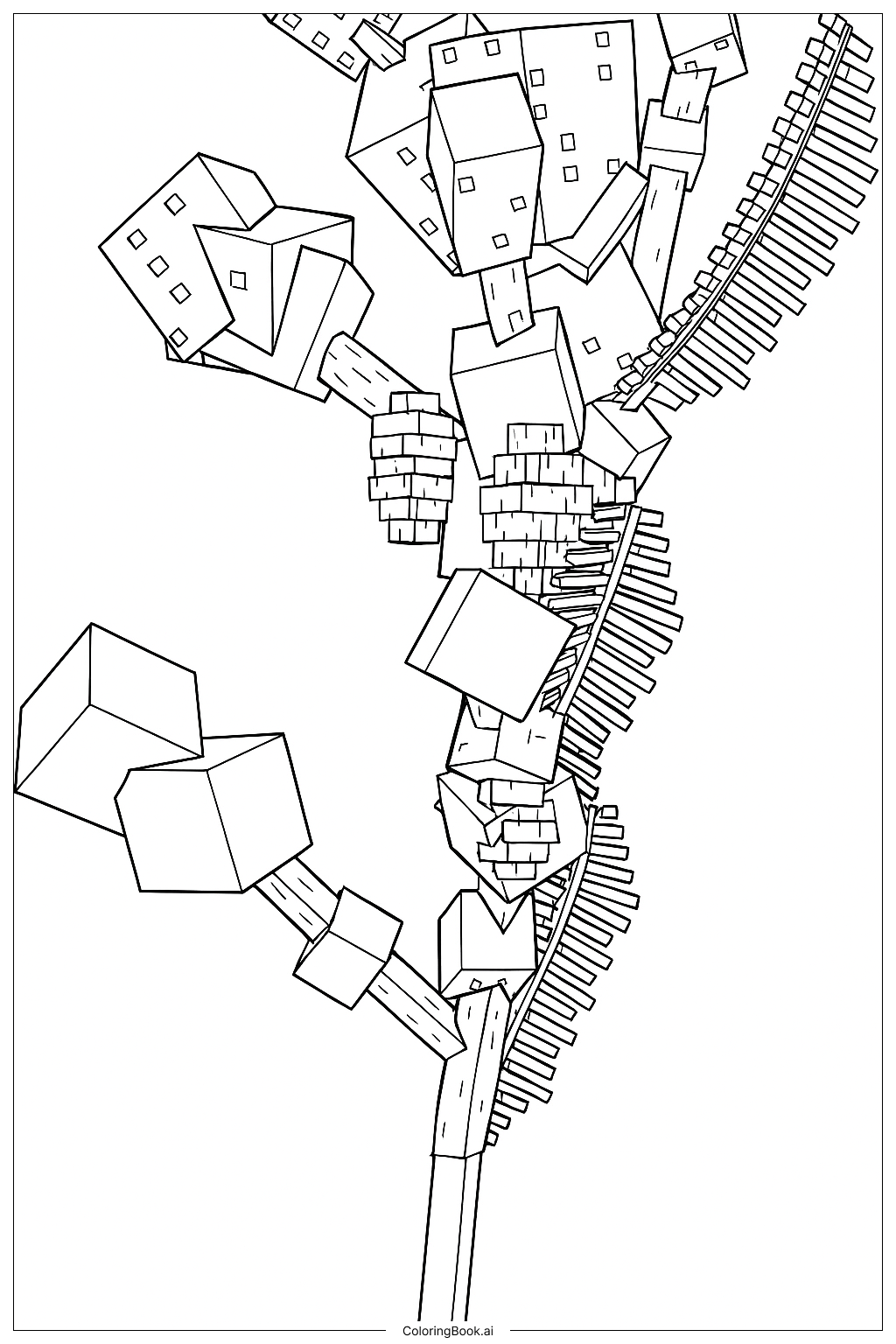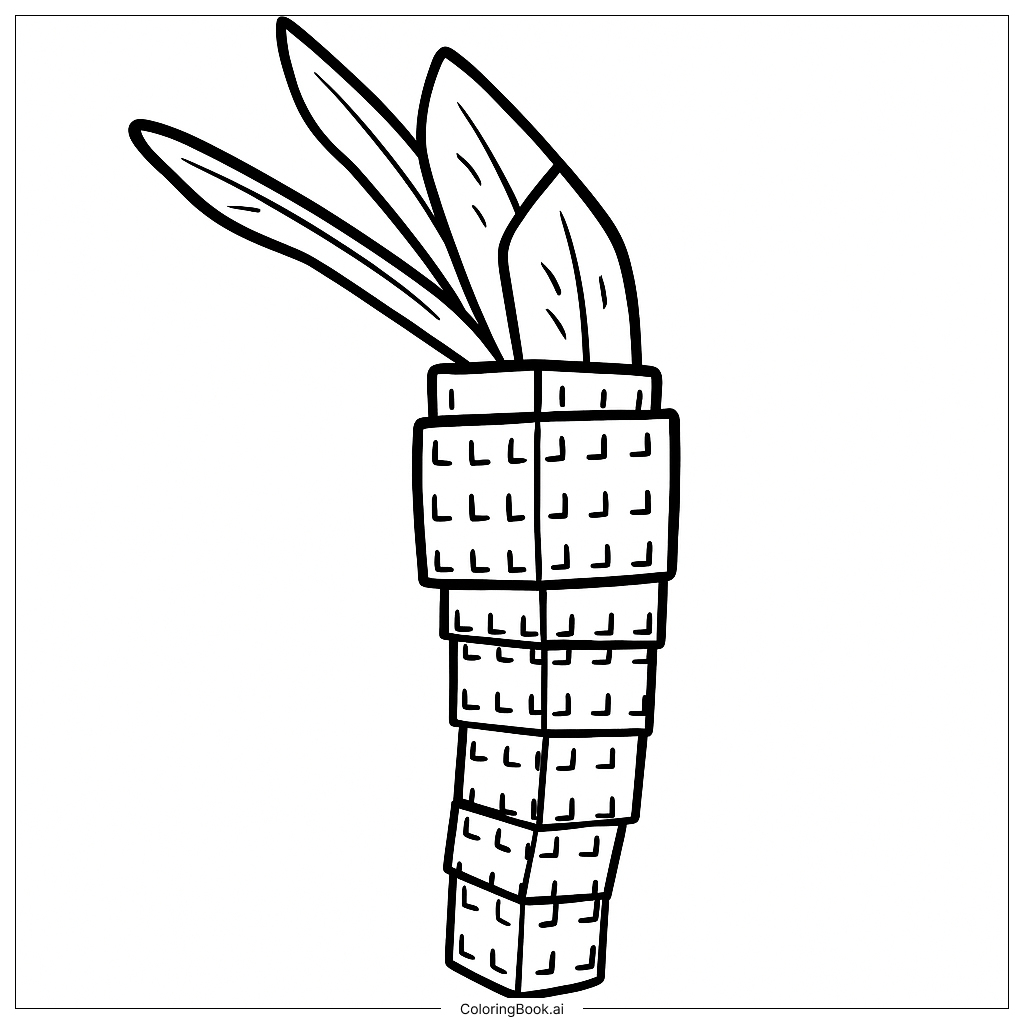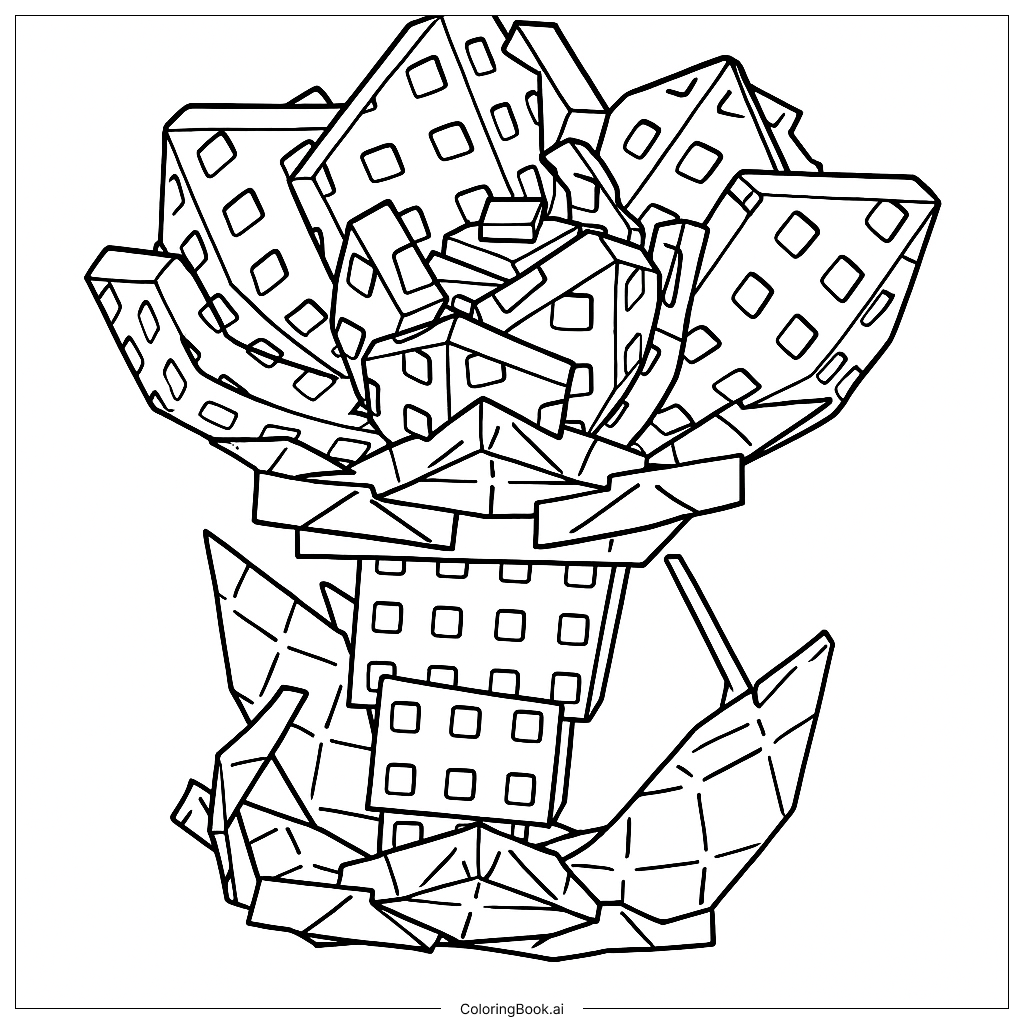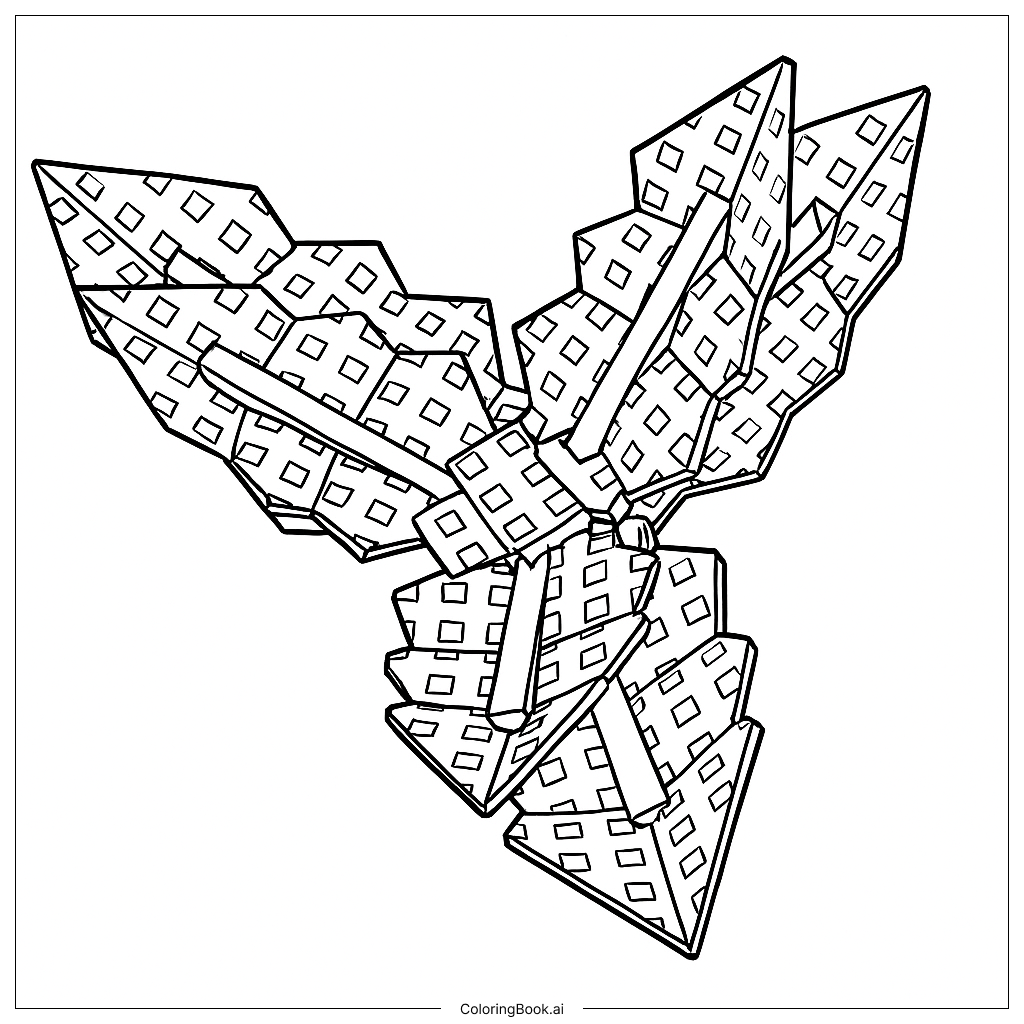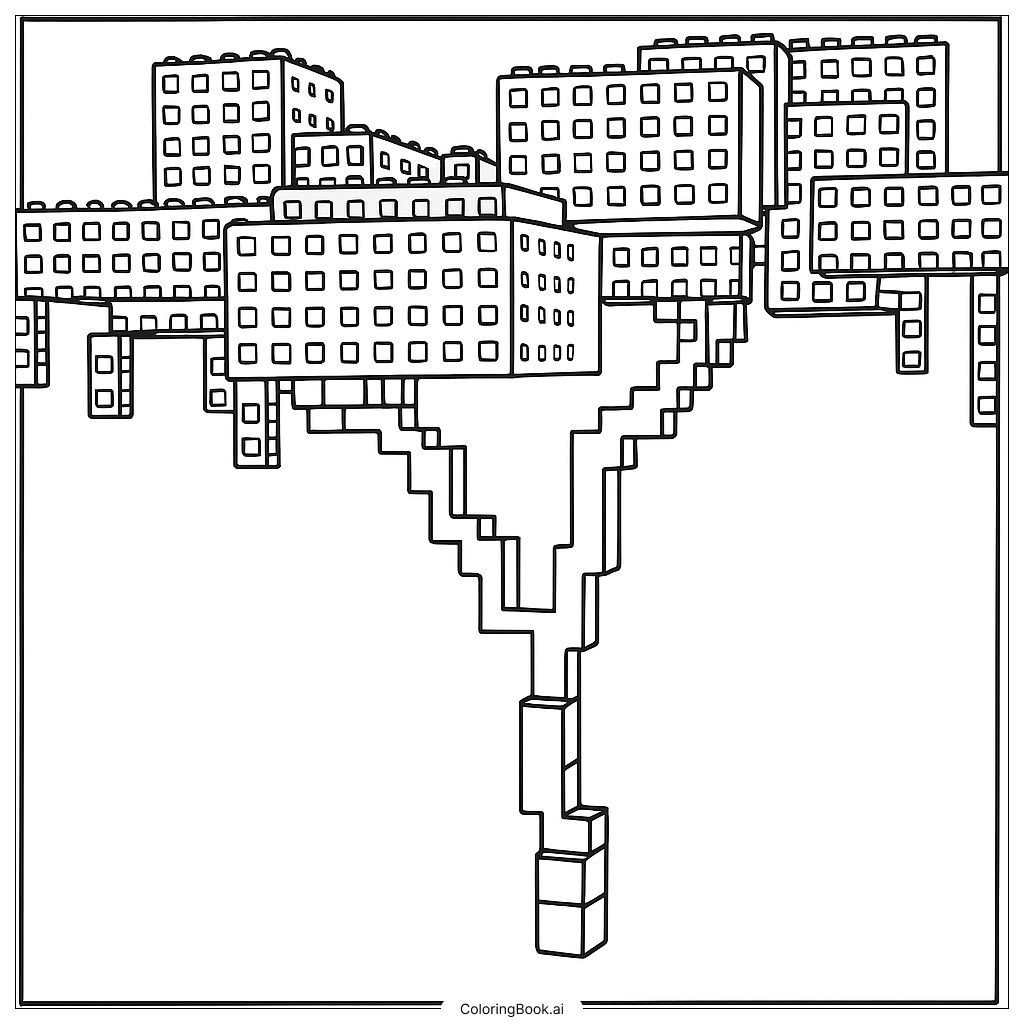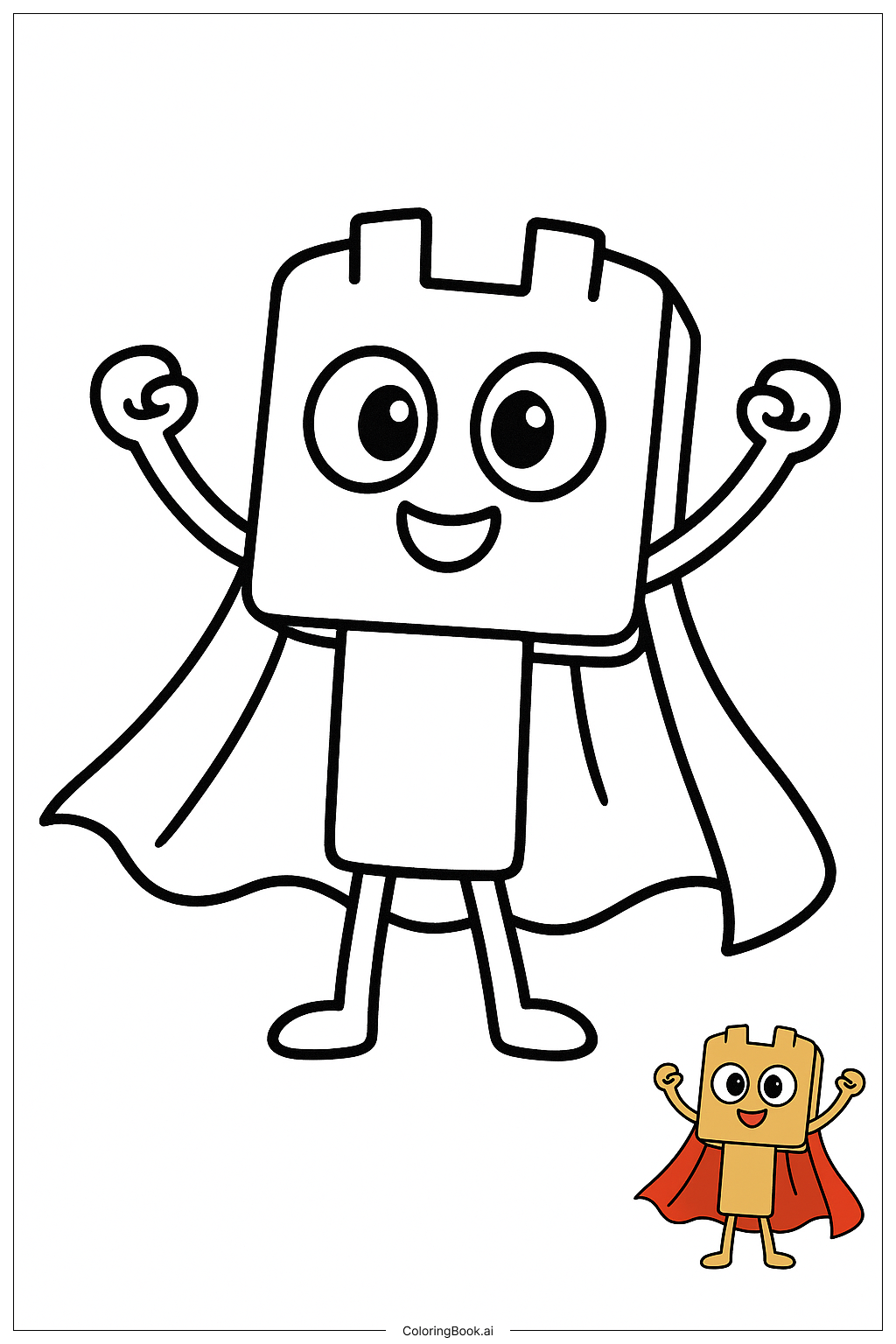Coloring tips: How to color Giant Pinecone Plant coloring page well?
To color this Giant Pinecone Plant, start with natural tones like browns, greens, and tans for the wooden stem and pinecone scales. You can use darker shades to highlight the shaded parts and lighter colors for areas where light hits. The small squares on the pinecones can be colored in contrasting colors to make them stand out. For the spiral track on the side, try using gradients from dark to light or alternate colors to give it a 3D effect. Use fine-tipped coloring tools for the detailed parts and experiment with different shades for a dynamic look. Remember to enjoy blending colors to bring this imaginative plant to life!
Coloring challenges: Which parts are difficult to color and need attention for Giant Pinecone Plant coloring page?
1. The image contains many small, detailed sections, especially the tiny squares on the pinecones that require patience and precision to color neatly.
2. The geometric shapes have sharp edges and angles, making color transitions and shading a bit challenging.
3. The spiral track on the side includes many evenly spaced thin lines that need careful coloring to avoid color bleed.
4. Creating depth by shading the wooden stem and pinecone segments requires understanding light and shadow.
5. Balancing natural look with abstract and mechanical design may be difficult for beginners.
Benefits of coloring books: Advantages of drawing Giant Pinecone Plant coloring page
Coloring this Giant Pinecone Plant helps improve fine motor skills due to its detailed parts. It encourages focus and patience while coloring small shapes and lines. The mix of natural and geometric shapes inspires creativity and imagination. It also teaches about shading and blending colors to create depth and texture, helping develop artistic skills. Overall, it is fun and educational for children aged 4 to 16.
